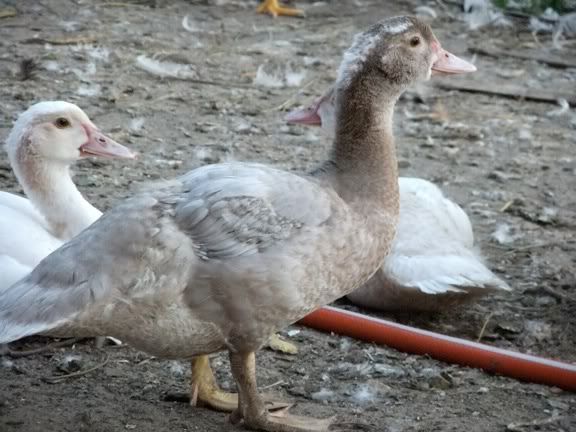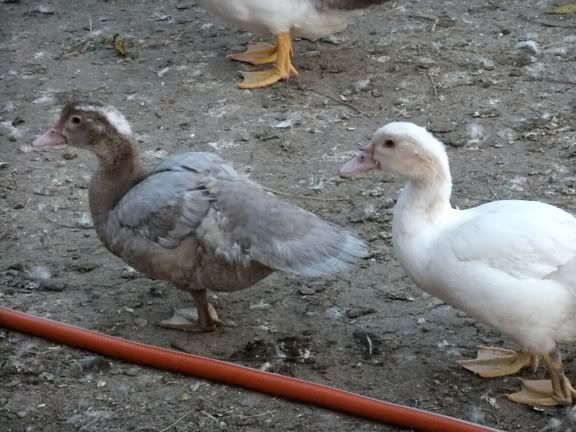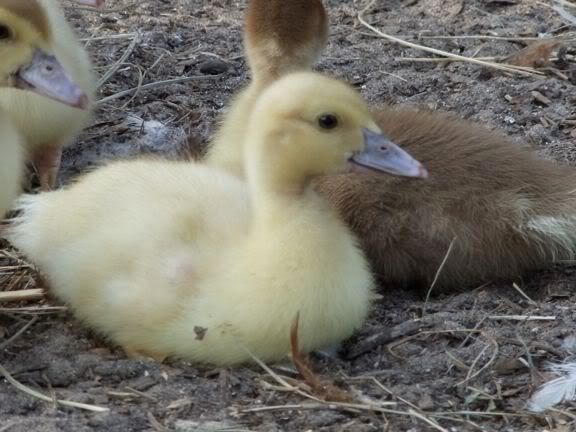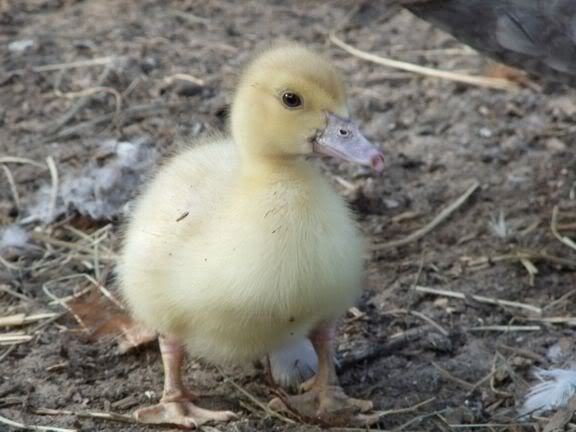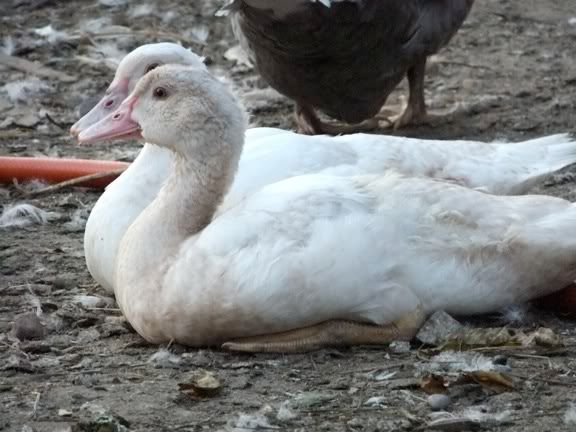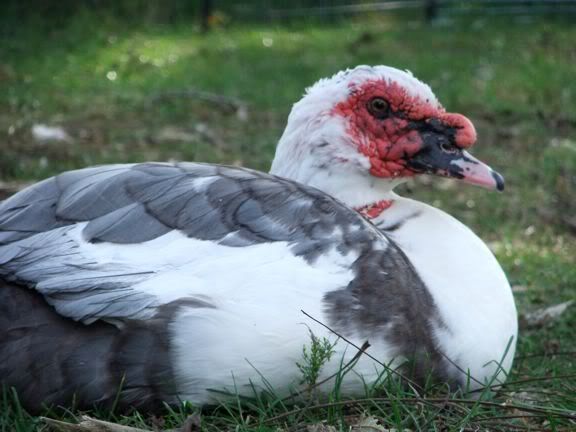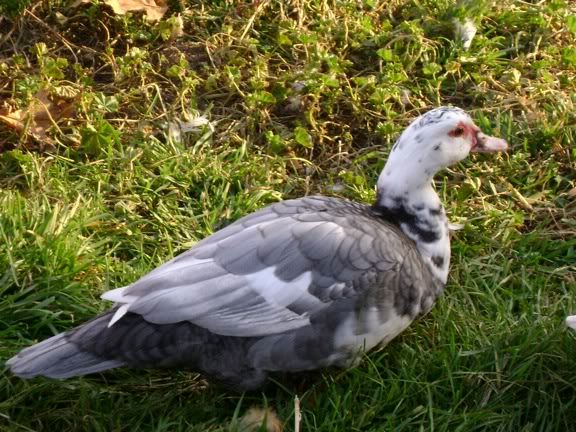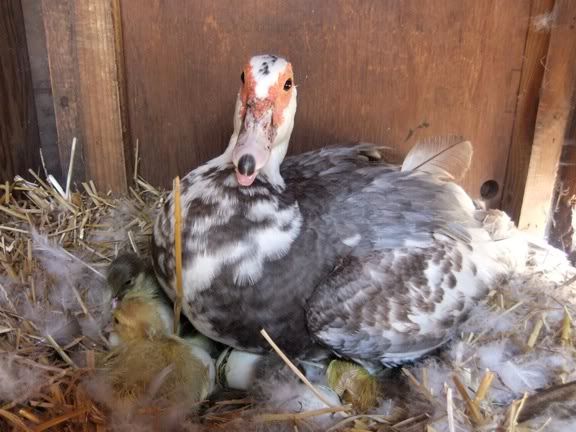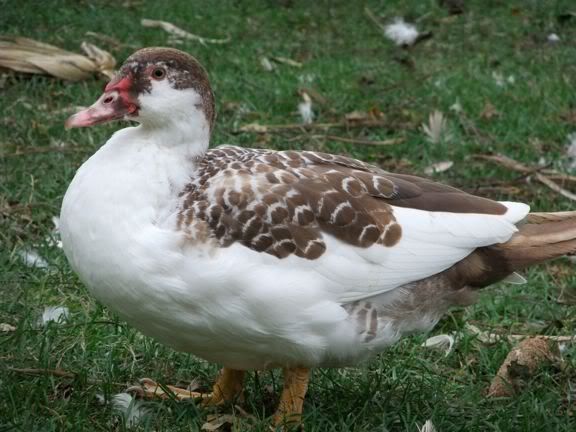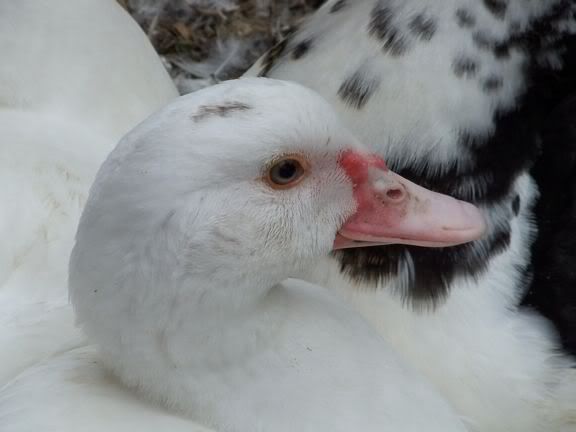Probable outcome of two blues ie N/n+ x N/n+ =
25% N/N = Silver
25% N/n+ = Blue
25% N/n+ = Blue
25% n+/n+ = Black
Your ducklings have also look to have inherited sex-linked recessive choc (ch), I don't know that you have auto faiogeno there? If neither blue pied adult expressed ch ie neither blue fawn, then it would have to be the drake carrying hidden ch ie heterzygous ch/Ch+ & duck Ch+/- resulting in progeny:-
25% Ch+/Ch+ = not choc
25% Ch+/ch = not choc
25% Ch+/- = not choc (female)
25% ch/- = choc (female
Since every probable outcome of the first punnett can occur with every probable outcome of the second punnett, possible combinations are:-
N/N, Ch+/Ch+
N/N, Ch+/ch
N/N, Ch+/-
N/N, ch/-
N/n+, Ch+/Ch+
N/n+, Ch+/ch
N/n+, Ch+/-
N/n+, ch/-
N/n+, Ch+/Ch+
N/n+, Ch+/ch
N/n+, Ch+/-
N/n+, ch/-
n+/n+, Ch+/Ch+
n+/n+, Ch+/ch
n+/n+, Ch+/-
n+/n+, ch/-
And broken down into colour:-
N/N, Ch+/Ch+
N/N, Ch+/ch 18.75% = Silver
N/N, Ch+/-
N/N, ch/- 6.25% = Lilac (females)
N/n+, Ch+/Ch+
N/n+, Ch+/ch
N/n+, Ch+/-
N/n+, Ch+/Ch+ 37.5% = Blue
N/n+, Ch+/ch
N/n+, Ch+/-
N/n+, ch/-
N/n+, ch/- 12.5% = Blue Fawn (females)
n+/n+, Ch+/Ch+
n+/n+, Ch+/ch 18.75% = Black
n+/n+, Ch+/-
n+/n+, ch/- 6.75% = 6.25% = Chocolate (females)
So, a few Lilac & Blue Fawns just like yours. These results are dependent upon your parent birds being Blue & not Blue fawns (drake N/n+, Ch+/ch & duck N/n+, Ch+/-), & sex-linked recessive ch & not auto f involvement. As for the pied part; are they true pieds or blue birds with white wings? If both parents pure for recessive auto Duclair pied gene then all progeny should really be pied patterned. If dominant white P involvement then progeny could range from nearly solid or self coloured (maybe white on head neck) to almost all white, with patterned birds being haphazardly marked maybe (as I understand it)? Also, photos a little difficult to tell but the lighter ducklings do look to have brown/fawn on head & neck ie not straight silver, but i could have this wrong, eyes aren't what they used to be.
Double check calculations as I don't have time & could be wrong. The top Blue fawn duckling (second pic) does look like a drake to me?
Cheers









